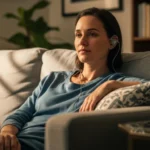A comprehensive review of how VNS devices restore energy by addressing nervous system dysfunction—with expert rankings of the top 4 medically certified options.
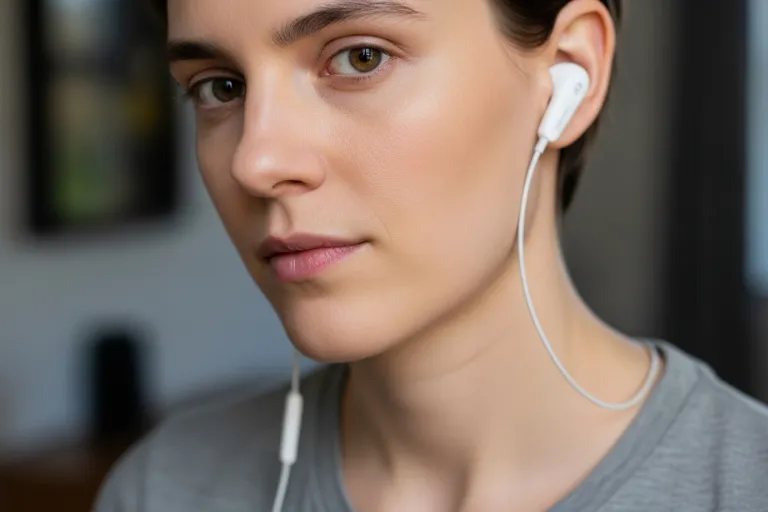
Chronic fatigue affects millions worldwide, causing persistent exhaustion that doesn’t improve with rest. Unlike ordinary tiredness, it disrupts work, relationships, and daily functioning, often despite normal medical test results.
Recent neuroscience research has identified a key factor: vagus nerve dysfunction. When this critical nerve isn’t working properly, your body gets stuck in “fight or flight” mode, unable to restore energy or recover properly.
This guide explains the connection between vagus nerve function and chronic fatigue, and reviews the leading vagus nerve stimulation (VNS) devices that may help restore your energy and quality of life.
Symptoms of Chronic Fatigue
Chronic fatigue is characterized by persistent exhaustion that doesn’t respond to rest or sleep. Common symptoms include:
Energy-related symptoms:
- Waking up exhausted despite 7-9 hours of sleep
- Severe afternoon energy crashes (the "2 PM wall")
- Needing daily naps just to function
- Exhaustion that worsens after physical or mental activity
- Spending weekends recovering instead of living
Cognitive symptoms:
- Brain fog and difficulty concentrating
- Memory problems
- Trouble processing information or making decisions
Sleep disturbances:
- Unrefreshing sleep despite adequate duration
- Difficulty falling or staying asleep
- Waking up feeling depleted
Additional symptoms:
- Digestive problems (IBS, bloating, reflux)
- Heart palpitations or dizziness
- Anxiety, depression, or mood swings
- Muscle pain, headaches, or inflammation
- Temperature regulation issues
The impact extends beyond symptoms: inability to work effectively, canceled social plans, loss of hobbies, and frustration with doctors who say “nothing is wrong.”
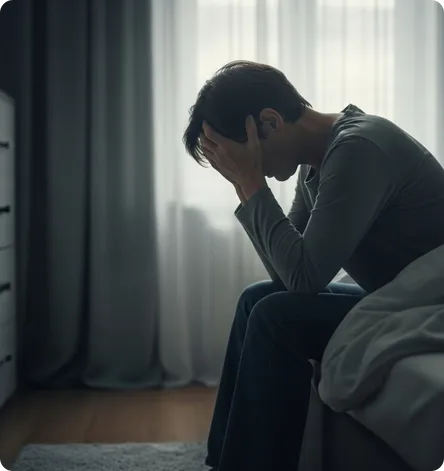
Chronic Fatigue Self-Assessment
Check the symptoms you experience regularly:
Energy & Physical Function
- Wake up exhausted despite adequate sleep
- Experience severe afternoon energy crashes
- Need daily naps to function
- Feel depleted for 24+ hours after exertion
- Spend weekends recovering
Cognitive Function
- Brain fog or difficulty concentrating
- Noticeable memory decline
- Trouble processing information
- Mental tasks feel overwhelming
Sleep Quality
- Don't feel refreshed after full night's sleep
- Difficulty falling or staying asleep
- Sleep feels light and not restorative
Autonomic Symptoms
- Heart palpitations or irregular heartbeat
- Digestive problems (IBS, bloating, reflux)
- Dizziness when standing
- Difficulty regulating body temperature
Mood & Mental Health
- Feel anxious or "wired but tired"
- Mood swings or irritability
- Symptoms of depression
Medical History
- Normal blood tests despite severe symptoms
- Doctors say "nothing is wrong" or "just stress"
- Traditional treatments haven't helped
- Symptoms began/worsened after viral illness or major stress
If you checked 8+ items, particularly in Energy, Cognitive, and Sleep categories, you may have chronic fatigue related to autonomic nervous system dysfunction.
Here’s what that means—and why there’s hope.
Your autonomic nervous system runs on a master control nerve called the vagus nerve. When this nerve isn’t working properly, it creates the exact pattern of symptoms you just identified: unrelenting fatigue, brain fog, non-restorative sleep, and the frustrating disconnect between how terrible you feel and “normal” test results.
The breakthrough:
We now understand that restoring vagus nerve function can address the root cause of these symptoms.
This is why vagus nerve stimulation is emerging as a promising approach worth discussing with your healthcare provider.
The Vagus Nerve Connection
What Is the Vagus Nerve?
The vagus nerve is the longest nerve in your autonomic nervous system, running from your brainstem through your neck to your heart, lungs, and digestive system. It controls critical involuntary functions:
- Heart rate and blood pressure
- Breathing patterns
- Digestion
- Immune and inflammatory responses
- Sleep-wake cycles
- Energy metabolism

The Two-Mode System
Your autonomic nervous system operates in two states:
- Sympathetic ("fight or flight"): Increases heart rate, burns energy rapidly, activated during stress
- Parasympathetic ("rest and digest"): Controlled by the vagus nerve, promotes recovery, energy restoration, and cellular repair
Healthy individuals shift between these states naturally. But chronic stress, illness, or trauma can impair vagus nerve function, trapping you in sympathetic dominance.
How Vagus Nerve Dysfunction Causes Chronic Fatigue
When your vagus nerve is underactive:
- Energy dysregulation: Your body can't shift into recovery mode, preventing cellular energy production. Mitochondria can't function properly, causing persistent exhaustion.
- Sleep disruption: Without proper vagus nerve signaling, you can't enter deep, restorative sleep stages. You sleep but don't recover.
- Chronic inflammation: The vagus nerve normally regulates inflammation. Dysfunction allows chronic low-grade inflammation, which directly causes fatigue.
- Low HRV: Heart rate variability (HRV) measures vagus nerve activity. Low HRV indicates poor nervous system health and correlates strongly with fatigue.
- Elevated stress hormones: Cortisol and adrenaline remain high, continuously draining energy reserves.

The Scientific Evidence: Proven Results for Chronic Fatigue
Published research establishes that vagus nerve dysfunction drives chronic fatigue—and that targeted neuromodulation reverses it:
The Problem Documented:
- Chronic fatigue patients show significantly reduced vagus nerve activity and lower heart rate variability compared to healthy controls
- Elevated inflammatory markers (IL-6, TNF-α, CRP) remain chronically high—resulting from impaired vagal regulation of the immune response
- Post-viral fatigue syndromes including Long COVID show marked vagus nerve impairment and autonomic dysregulation
Clinical Trials Prove VNS Works:
- Fatigue Study: 48% reduction in fatigue using validated Pichot Fatigue scoring. Patients reported sustained improvements one week after therapy ended—indicating actual recovery, not temporary relief.
- Inflammation Trial: Randomized controlled study showed 78% reduction in inflammatory markers at 3 months versus placebo—directly targeting the immune dysregulation driving persistent fatigue.
- Overall Improvement: Clinical data demonstrated 61% overall symptom improvement including increased energy, reduced post-exertional crashes, and restored daily function. [1]
- Heart Rate Variability: VNS significantly improved all three HRV parameters (p=0.001)—measurable autonomic improvements that correlate with energy restoration.
“There is no trial of any drug or anything I’ve ever done in all my years that makes a patient so well that he or she no longer fulfills criteria for chronic fatigue syndrome,” states Benjamin Natelson, neurologist at Mount Sinai.
- Clinical Adoption: Over 100 research institutions including University of Chicago, UCLA, and University College London have now used this technology in studies. 4 million d sessions documented. 1,000+ healthcare professionals recommended this CE-marked medical device.
- The mechanistic conclusion: VNS addresses the root cause—autonomic dysfunction, neuroinflammation, and immune dysregulation—rather than masking symptoms. Unlike drugs providing temporary suppression, it facilitates actual nervous system recovery.
VNS Devices as a Solution: How They Work
The Technology
Vagus nerve stimulation (VNS) delivers controlled electrical impulses to the vagus nerve, “exercising” it back to proper function. Modern transcutaneous VNS (tVNS) devices work non-invasively through electrodes placed:
- Cervically (neck): Near the carotid artery where the vagus nerve runs close to the skin
- Auricular (ear): Targeting the vagus nerve branch in the outer ear or tragus
How It Works
When electrical impulses reach the vagus nerve through the ear, they trigger five key recovery mechanisms:
- Anti-Inflammatory Activation: Releases acetylcholine, which suppresses inflammatory cytokines (TNF-α, IL-1β, IL-6) driving persistent fatigue and pain.
- Brainstem Modulation: Signals reach brain centers controlling heart rate, breathing, blood pressure, arousal, and energy regulation—addressing multi-system symptoms.
- Autonomic Rebalancing: Shifts your nervous system from sympathetic dominance (stuck in fight-or-flight) to parasympathetic restoration (rest-and-digest healing mode).
- Neuroplastic Enhancement: Promotes brain-derived neurotrophic factor (BDNF), enabling repair of damaged neural networks for long-term recovery.
- Energy Metabolism Restoration: Improves mitochondrial function and cellular energy production, directly addressing the metabolic dysfunction underlying chronic fatigue.
Clinical Parameters
Effective VNS devices use parameters validated by research:
- Session duration: 30-60 minutes per day
- Intensity: Adjustable to individual tolerance
Expected Timeline
VNS retrains your nervous system gradually:
- Week 1-2: Improved relaxation during sessions, slightly deeper sleep
- Week 3-4: Noticeable energy improvements, reduced crashes, better mood
- Month 2-3: Sustained energy, cognitive clarity, reduced caffeine dependence
- Month 3+: Restored normal energy regulation
Safety
VNS is generally safe and well-tolerated. Mild side effects may include:
- Tingling at stimulation site
- Temporary jaw tightness (cervical devices)
- Mild dizziness (typically subsides)
Contraindications: Not suitable for people with pacemakers, recent heart attack, pregnancy, or history of vagotomy. Always consult your doctor first.
Top 4 VNS Devices for Long COVID
#1: Nurosym
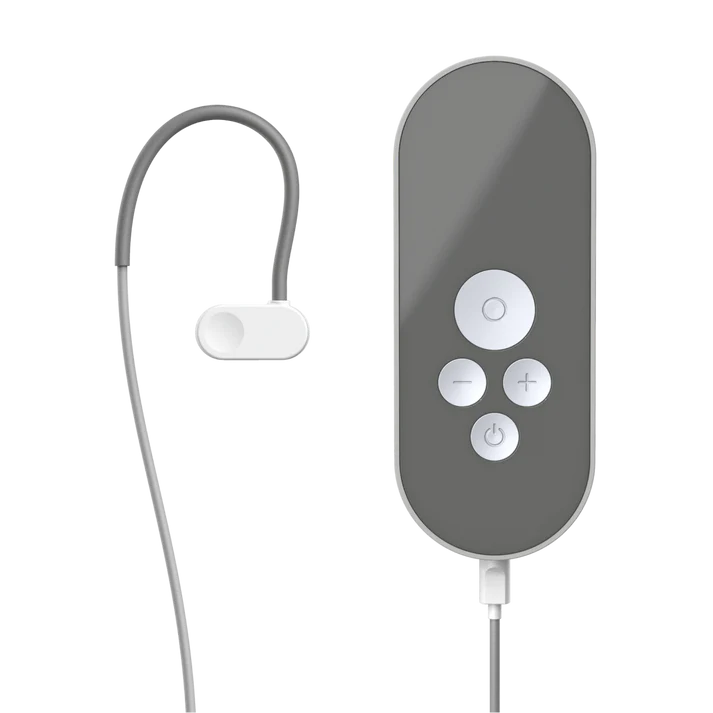
Price: 700 EUR (€70 research subsidy available for Long COVID patients)
Type: Auricular (ear-worn)
Technology: AVNT™ by Parasym
Why #1:
- Most extensively validated: Supported by 50+ peer-reviewed publications from University College London, UCLA, or University of Chicago and leading research institutions worldwide
- Proven efficacy for Chronic Fatigue & Long COVID: Clinical trials document 61% overall symptom improvement, 48% fatigue reduction[2], 78% reduction in inflammatory markers, 40% improvement in post-COVID POTS symptoms[3]—directly targeting the autonomic dysfunction and neuroinflammation driving persistent post-viral illness
- Independent certification: CE-marked medical device meeting rigorous safety and performance standards—third-party verified.
- Clinical adoption: Used by 1,000+ healthcare professionals treating post-viral syndromes; integrated into Long COVID rehabilitation protocols; 4,000,000+ supervised stimulation sessions completed
- Evidence-based parameters: Stimulation protocols derived from peer-reviewed fatigue research, not proprietary guesswork
- Comprehensive support: 30-day money-back guarantee, clinical guidance resources, responsive technical support, ongoing research participation opportunities
Best for: Long COVID patients seeking the most scientifically validated device with published clinical trials demonstrating efficacy for post-viral autonomic dysfunction, fatigue, brain fog, and inflammatory symptoms.
#2: Truvaga Plus
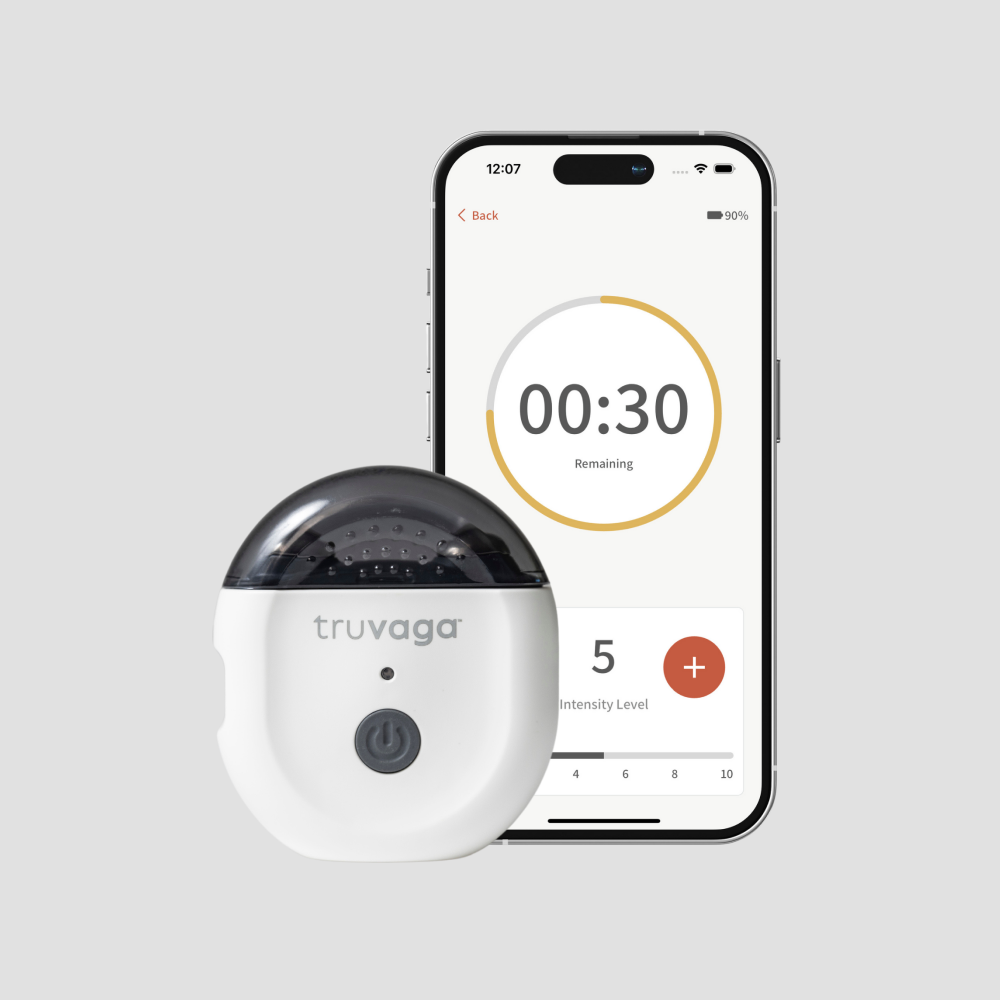
Price: 435 EUR
Type: Cervical (neck handheld)
Technical note: Shares core technology with gammaCore, an FDA-cleared device for migraine/cluster headache (not Long COVID). Rapid parasympathetic effects. Straightforward protocol.
Considerations: Ongoing costs for conductive spray plus potential app subscription—verify pricing before purchase. Common side effects include muscle spasms, facial droop, lip pull, and headache. Not suitable for users with cardiac conditions, pacemakers, or recent heart issues—relevant for Long COVID patients with cardiovascular complications. Mobile app connectivity problems reported.
Best for: Those preferring cervical stimulation with FDA-cleared technology lineage (for migraine, not Long COVID) who can tolerate potential facial muscle spasm side effects.
#3: Pulsetto

Price: 601 EUR
Type: Cervical (hands-free collar)
Advantages: Hands-free wearable design. HSA/FSA eligible. 2-year warranty coverage.
Critical Limitations:
No peer-reviewed clinical trials demonstrating efficacy for Long COVID or post-viral syndromes—only company press releases and retail testimonials. Neck-worn vagus stimulators have known contact reliability issues: they rely on precise placement over the cervical branch of the vagus nerve, which varies anatomically between individuals. This often results in poor nerve engagement, especially in people with smaller necks or higher adipose distribution.
Users frequently report skin irritation, redness, discomfort, and muscle twitching from electrode pressure and electrical spillover into the sternocleidomastoid muscle.
Across user reviews and clinician feedback, improvements in Long COVID symptoms are minimal to non-existent compared with auricular neuromodulation devices that have documented HRV and anxiety-symptom modulation in controlled trials.
Not recommended for Long COVID: The $200-350 price difference seems attractive until you calculate the real cost: months of continued post-viral disability while using an unproven device. After already losing months or years to Long COVID, can you afford to gamble more time on a device without clinical evidence? A $269 device that doesn’t work costs infinitely more than a $700 device that restores your function. Those serious about Long COVID recovery choose devices with published clinical trials—not marketing claims.
#4: Sensate
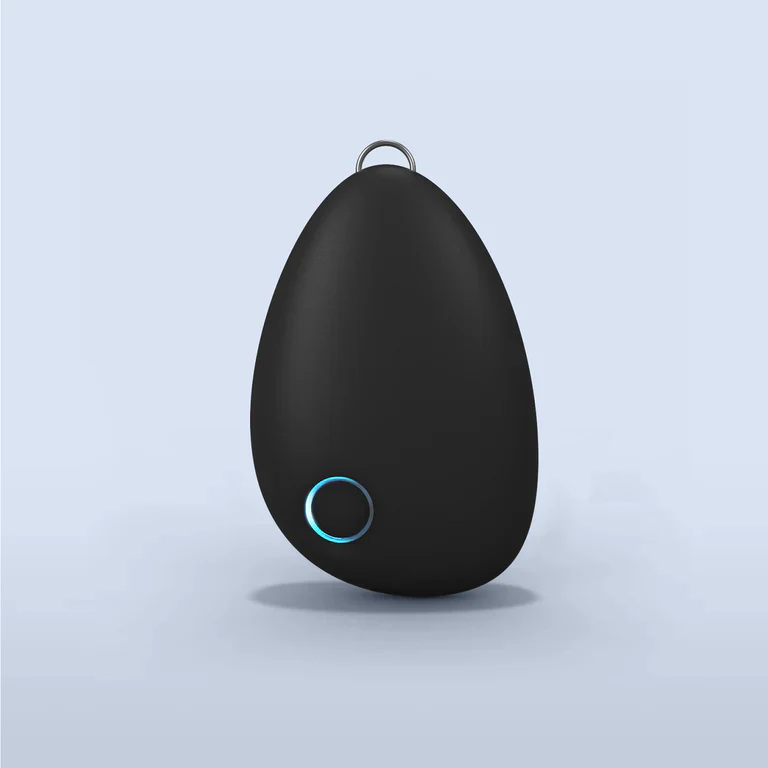
Price: 349 EUR
Type: Chest-worn vibrotactile device (not true VNS)
Advantages: Comfortable pebble design worn on chest. Simple app interface with soundscapes. Lower price point. Can be used while performing other activities with a neck strap.
Critical distinction: Sensate does not directly stimulate the vagus nerve through electrical impulses like other devices in this comparison. Instead, it uses infrasonic vibrations and bone conduction placed on the chest—an indirect approach targeting general stress reduction rather than specific vagal nerve activation. While bone conduction at the ear has some research supporting vagal stimulation, Sensate’s chest placement lacks scientific substantiation for direct vagus nerve engagement. The mechanism is fundamentally different: actual VNS devices (like Nurosym, Truvaga, or Pulsetto) deliver calibrated electrical signals directly to accessible vagus nerve branches; Sensate delivers vibrations to your sternum hoping for downstream effects.
For Long COVID patients: This matters significantly. Long COVID requires restoration of measurable autonomic function—reduced inflammation, normalized immune response, improved energy metabolism, enhanced cognitive function. General relaxation devices may help with stress management but do not address the underlying vagal dysfunction, neuroinflammation, and immune dysregulation driving Long COVID symptoms. No clinical trials demonstrate Sensate’s efficacy for Long COVID or post-viral syndromes—only company-funded studies showing general stress reduction in healthy volunteers.
Best for: Those seeking a general relaxation and stress management tool rather than targeted vagus nerve stimulation for post-viral recovery. Not recommended for individuals prioritizing evidence-based Long COVID treatment.
Take Action
Chronic fatigue related to vagus nerve dysfunction is treatable. Your nervous system can be retrained.
With 50+ clinical studies and 4,000,000+ successful sessions, Nurosym offers scientifically validated hope for restoring your natural energy.
30-day money-back guarantee. Certified medical device. Backed by 50+ clinical studies.
The article does not in any way constitute as medical advice. Please seek consultation with a licensed medical professional before starting any treatment. This website may receive commissions from the links or products mentioned in this article.
Resources:
Auricular Vagal Neuromodulation Therapy (AVNT) — Significantly Increases Vagus Nerve Activity and Heart-Rate Variability in Healthy Subjects (Randomised Placebo-Controlled Study), Nurosym Ltd. The two-stage cross-over trial found a ~61% increase in high-frequency HRV (indicative of parasympathetic/vagal activity) compared with sham (p < 0.0017). Available at: https://nurosym.org/fr/pages/auricular-vagal-neuromodulation-therapy-avnt-significantly-increases-vagus-nerve-activity-and-heart-rate-variability-in-healthy-subjects-randomised-placebo-controlled-study
Auricular Vagal Neuromodulation Therapy (AVNT) — Reduces Fatigue in One-Group Assignment in Post-Viral Syndrome Patients, Nurosym (Parasym Ltd.). The 10-day protocol (daily 35-minute sessions) in post-viral syndrome patients reported approximately a 48% improvement in fatigue scores (Pichot Fatigue Scale, p < 0.0001). Available at: https://nurosym.org/fr/pages/auricular-vagal-neuromodulation-therapy-avnt-reduces-fatigue-in-one-group-assignment-in-post-viral-syndrome-patients
Auricular Vagal Neuromodulation Therapy (AVNT) — AVNT in Postural Tachycardia Syndrome: A Randomised Clinical Trial, Nurosym Ltd. The double-blind, placebo-controlled trial in patients with Postural Tachycardia Syndrome (POTS) reported ~40 % reduction in postural tachycardia, significant decreases in α1-adrenergic and β1-adrenergic autoantibodies, and improved heart-rate variability without adverse effects. Available at: https://nurosym.org/fr/pages/auricular-vagal-neuromodulation-therapy-avnt-in-postural-tachycardia-syndrome-a-randomised-clinical-trial
Share via:


